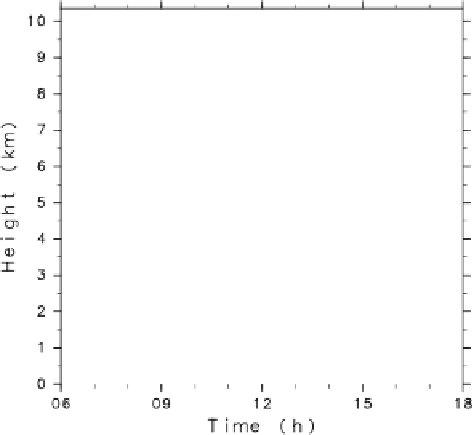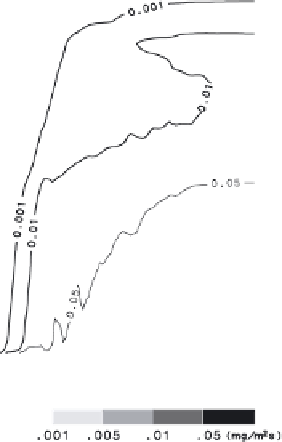Geoscience Reference
In-Depth Information
Fig. 8. The same as Fig. 3, except for the case of ∆
x
= 4 km with subgrid-scale updraft
acceleration.
is considered to be reasonable. Overall, introducing the parameterization
seems to improve the development and evolution of dust transport.
4. Summary and Conclusions
This study investigated the microscale transport of dust aerosol due to
convection under a fair weather condition in a desert area. A high-resolution
(i.e. ∆
x
= 100 m) simulation that explicitly resolves shallow and deep
convective motions has been conducted. A diurnal variation of PBL and
cumulus development were well reproduced. Dust aerosol is raised and
mixed within the PBL by intense turbulent motion, and is transported
further upward in the free troposphere by deep cumulus convection.
We have also performed a series of numerical experiments examining
the sensitivity of convective dust transport to model resolution in the cloud-
resolving range with a grid spacing of
(1 km). The case examined was a
fair weather boundary layer and an associated cumulus development over a
desert area. Since boundary-layer organized convection has a spatial scale of
O
O
(1 km),
10
the 4 km grid was not sucient to resolve the convective motion,





















































































































































































































































































































































































































































































































































